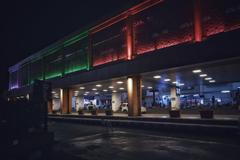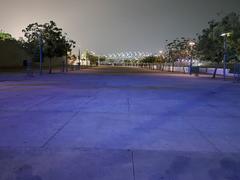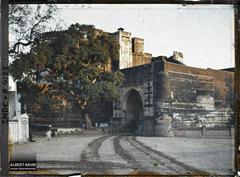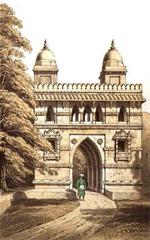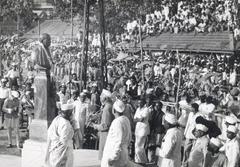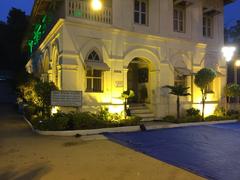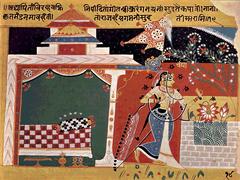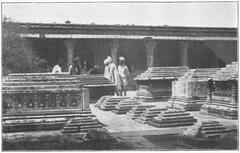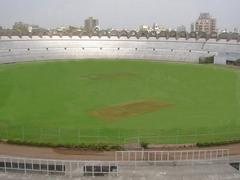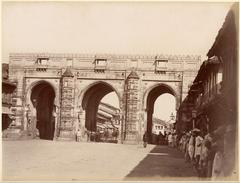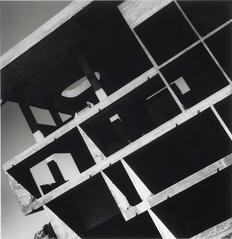Hazrat Pir Mohammad Shah Library Ahmedabad: Visiting Hours, Tickets, and Visitor Guide
Date: 04/07/2025
Introduction
Nestled in the heart of Ahmedabad’s old city, the Hazrat Pir Mohammad Shah Library is a beacon of Sufi scholarship, Islamic spirituality, and Indo-Persian cultural heritage. Founded by the 18th-century Sufi saint and scholar Hazrat Pir Mohammad Shah, the library houses a remarkable collection of over 2,000 rare manuscripts in Turkish, Arabic, Sindhi, Urdu, and Persian. These texts span religious scriptures, Sufi poetry, philosophy, and scientific works, many featuring exquisite calligraphy and seals. Adjacent to the saint’s dargah, the library continues to inspire researchers, students, and cultural travelers, serving as a vibrant institution bridging devotion, learning, and Gujarat’s pluralistic identity.
Strategically located near Pankore Naka on Pir Muhammad Shah Road, the library sits amid Ahmedabad’s architectural landmarks such as the Jama Masjid, Sidi Saiyyed Mosque, and Bhadra Fort. Its Indo-Islamic architecture, with carved sandstone façades and tranquil courtyards shaded by neem and banyan trees, offers a serene retreat. The library’s free entry, accessible pathways, and occasional guided tours, coordinated by the Peer Mohammad Trust, underscore its enduring commitment to education, interfaith dialogue, and community engagement.
Despite limited modern amenities and the challenges of navigating Ahmedabad’s historic lanes, the Hazrat Pir Mohammad Shah Library remains a vital hub for manuscript preservation. Guided by dedicated custodians like Professor Mohidduin Bombaywala, the library continues to nurture Gujarat’s intellectual traditions and Sufi heritage, making it a rewarding destination for scholars, history enthusiasts, and cultural tourists.
For comprehensive visitor information and historical insights, explore resources such as Indianetzone, Trek Zone, and Gujarat Tourism.
Table of Contents
- Origins and Legacy of the Hazrat Pir Mohammad Shah Library
- Manuscript Collection and Preservation
- Visiting Information: Hours, Entry, Accessibility
- How to Reach and Travel Tips
- Nearby Attractions and Heritage Sites
- Special Events and Guided Tours
- Architectural Highlights
- Challenges and Opportunities for Visitors
- Practical Visitor Tips and FAQs
- Conclusion and Further Resources
Origins and Legacy of the Hazrat Pir Mohammad Shah Library
The library’s foundation is intimately tied to Hazrat Pir Mohammad Shah, born in 1688 in Bijapur. A descendant of the Prophet Muhammad, he received early training in Sufism and Islamic sciences under his uncle, Abd-ur-Rehman. Migrating to Ahmedabad in 1711, Mohammad Shah became a renowned scholar and spiritual leader during the reign of Mughal Emperor Aurangzeb. His vision led to the establishment of a qutubkhana (library) next to his dargah, creating a sanctuary for seekers of knowledge and a repository for rare manuscripts in theology, Sufism, philosophy, and science (Indianetzone).
Manuscript Collection and Preservation
The Hazrat Pir Mohammad Shah Library boasts a collection of over 2,000 ancient manuscripts in Turkish, Arabic, Sindhi, Urdu, and Persian. These include Qur’anic texts, Sufi literature, historical documents, scientific treatises, and poetry—many penned or compiled by Mohammad Shah himself. The Peer Mohammad Trust, with custodians like Professor Mohidduin Bombaywala, oversees the preservation and cataloguing of these treasures, promoting education and research among students and scholars (Indianetzone).
Visiting Information: Hours, Entry, Accessibility
- Visiting Hours: Tuesday to Sunday, 10:00 AM – 5:00 PM; closed on Mondays and public holidays.
- Entry Fee: Free for all visitors.
- Accessibility: Ramps and accessible pathways are available, but some uneven surfaces and stairs may pose challenges due to the historic architecture.
- Dress Code: Modest attire recommended; women are advised to cover their heads. Shoes must be removed before entering the library and mosque areas.
How to Reach and Travel Tips
The library is centrally located near Pankore Naka in Ahmedabad’s old city. It is approximately 6 km from Ahmedabad Railway Station (Ahmedabad Junction) and 15 km from Sardar Vallabhbhai Patel International Airport. Local buses, auto-rickshaws, and taxis can take you close to the site; the narrow lanes may require a short walk. As the library can be difficult to locate, first-time visitors should consider hiring a local guide or using navigation apps. The best time to visit is during the cooler months from October to March, ideally in the morning or late afternoon.
Nearby Attractions and Heritage Sites
Located within walking distance of major Ahmedabad landmarks, the library offers easy access to:
- Jama Masjid: An iconic 15th-century mosque.
- Sidi Saiyyed Mosque: Famous for its intricate stone latticework.
- Bhadra Fort: A historic fort and palace complex.
- Teen Darwaza and Ahmed Shah’s Tomb: Additional heritage sites close by.
Combining your library visit with a heritage walk enriches the experience of Ahmedabad’s cultural landscape (Trek Zone; Gujarat Tourism).
Special Events and Guided Tours
The library occasionally hosts guided tours and cultural events, which are coordinated by the Peer Mohammad Trust. These tours offer insights into the manuscript collection, architectural features, and Sufi traditions. It is advisable to contact the Trust or local academic institutions in advance to arrange access or check event schedules. While formal tours are not regular, staff and local scholars sometimes facilitate group visits.
Photography is permitted in public and exterior areas but discouraged inside the rare manuscripts room to protect fragile items.
Architectural Highlights
The Hazrat Pir Mohammad Shah Library is celebrated for its Indo-Islamic architecture:
- Exterior: Carved sandstone with floral and geometric motifs, jali (lattice) windows for ventilation, arched entrances, and a low parapet suited to the climate (Ahmedabad Heritage Walk).
- Interior: A high-ceilinged reading hall illuminated by stained glass windows, traditional patterned tile flooring, teak wood bookshelves, and decorated with Arabic and Persian calligraphic inscriptions (Times of India).
- Courtyard: Sandstone-paved and shaded by mature trees, with a central fountain and stone benches, connecting the library to the dargah complex.
- Integration: The library is connected to the mosque, tomb, and madrasa via colonnades and courtyards, creating a harmonious religious and educational environment (Gujarat Tourism).
Challenges and Opportunities for Visitors
Challenges
- Navigational Difficulties: Labyrinthine old city streets and minimal signage can make the library hard to find.
- Limited Modern Amenities: Lack of air conditioning, digital catalogues, and modern research facilities.
- Accessibility: Steps and uneven surfaces may limit mobility; historic architecture restricts full wheelchair access.
- Language Barriers: Catalogues and manuscripts are primarily in Urdu, Arabic, and Persian.
Opportunities
- Cultural Engagement: Experience Sufi spirituality, Indo-Islamic architecture, and literary heritage.
- Research Collaboration: Opportunities for digitization, translation, and academic partnerships.
- Community Programs: Cultural events, exhibitions, and interfaith dialogues foster social cohesion and education.
Practical Visitor Tips
- Plan your visit: Prefer cooler months (October–March), and avoid Fridays and major Islamic holidays.
- Dress appropriately: Modest attire; head covering for women.
- Use public transport: Narrow lanes limit parking; auto-rickshaws and taxis are familiar with the location.
- Respect the site: Maintain silence, remove shoes, and avoid disruptive behavior.
- Photography: Permitted outside; restricted inside manuscript areas.
- Support conservation: Donations aid preservation efforts.
- Research access: Scholars should contact the library or shrine trust in advance for permission.
Frequently Asked Questions (FAQ)
Q: What are the Hazrat Pir Mohammad Shah Library’s visiting hours?
A: Tuesday to Sunday, 10:00 AM–5:00 PM; closed Mondays and public holidays.
Q: Is there an entry fee?
A: No, entry is free; donations are appreciated.
Q: Are guided tours available?
A: Occasionally, by prior arrangement with the Peer Mohammad Trust or local academic institutions.
Q: Is the library accessible for people with disabilities?
A: Some ramps and pathways exist, but historic architecture limits full accessibility.
Q: Can I take photographs inside the library?
A: Photography is permitted in outdoor and public areas; inside manuscript rooms, it is restricted.
Q: How can researchers access rare manuscripts?
A: Prior permission is required; contact the library or shrine trust, preferably via academic channels.
Conclusion
The Hazrat Pir Mohammad Shah Library stands as a vital cultural and intellectual treasure within Ahmedabad’s historic core. Its rare manuscript collection, architectural grace, and role as a hub of Sufi and Indo-Islamic heritage make it a must-visit for scholars, students, and travelers. While planning and respectful conduct are essential due to limited amenities and religious sensitivities, visitors are rewarded with a unique immersion in Gujarat’s living traditions of learning and spirituality.
Stay informed about visiting hours, cultural events, and preservation initiatives by using the Audiala mobile app and following the Peer Mohammad Trust’s social media channels. Your visit helps sustain the library’s legacy and supports ongoing conservation efforts.
For further reading and official updates, consult:
